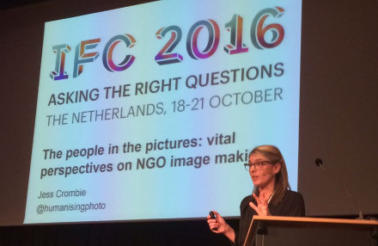Save the Children is reviewing how it uses images of beneficiaries in fundraising campaigns and will publish its findings towards the end of the year.
Jess Crombie, deputy director of creative content at Save the Children UK, was speaking at the International Fundraising Congress in the Netherlands yesterday where she said that charity has been conducting qualitative research about what beneficiaries used in its fundraising material think of their depiction over the past two years.
Crombie said that STC spoke to 202 beneficiaries in 4 countries – the UK, Jordan, Bangladesh and Niger – and asked them how they felt about the ways in which they were portrayed in the charity’s fundraising communications.
For the most part, she said contributors agreed that images of “suffering” were warranted in fundraising communications – with one participant saying that “happy images don’t move people” to give.
"Research participants agreed that images of suffering should be used for fundraising purposes," said Crombie. "However, there were preferences for images and stories that also showed resilience, solutions and people speaking for themselves.”
‘Power and purpose of the images’
Crombie said that the majority of beneficiaries that were interviewed as part of the process understood the “power and purpose of those images,” but said they didn’t always want to be portrayed as being helpless or suffering.
She said that the reason that many beneficiaries are willing to allow themselves to be used in Save the Children fundraising DRTV and direct mail campaigns can be boiled down to a number of motivating factors, those being: a desire to help others in the same predicament; a need to have a voice and to be heard; an existing relationship with the organisation and, in some cases, a sense of desperation.
Crombie said that while the charity always uses consent forms there is room for improvement.
“The use of consent forms was universal but in Jordan, Bangladesh and Niger – three countries in which we do take translated forms – despite the forms, people didn’t really understand what they had signed up for. I would say that process was generally a positive one, but there are some really important learning’s for us to take from this around informed consent”.
Crombie said that the research would be made freely available for anyone on the Save the Children’s website by the end of the year. She also said that the organisation would be facilitating a series of public debates – both digitally and in person – around the topic.









